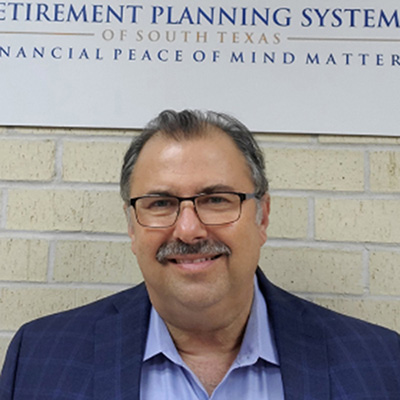
Article Library

Charles Cardenas
RPS Retirement Planning Systems of South Texas
212 W 3rd St
Weslaco, Texas 78596
charles@rpsstx.com
(956) 463-6862
Building Your Retirement Strategy in Middle Age: It's Not Too Late
You're not alone if you're in your 40s or 50s and feel like your retirement savings are lagging. Many people reach this stage of life and realize they haven't saved as much as they'd hoped. But here's the thing: the game isn't over. With a few strategic moves, you may still build a solid retirement plan, even if you're getting a later start than you'd like.
Take Stock of Where You Are
You must know where you stand before you may chart a course forward. This means taking a thorough inventory of your finances. What do you have saved so far? What are your debts? How much are you currently contributing to retirement accounts? These questions aren't always easy to face but are crucial for creating a realistic plan.
List all your assets—savings accounts, retirement funds, and other investments. Next, tally up your debts. Subtract the debts from your assets to get a clear picture of your net worth. This number might not be as high as you'd like, but knowing it will help determine how much ground you need to cover.
Rethink Your Budget
If you're behind on your savings, your current budget might need an overhaul. Take a hard look at your spending habits and identify areas where you may cut back. The goal is to free up as much money as possible to funnel into your retirement accounts.
This might mean making some tough choices. For example, you might need to trim discretionary spending on things like dining out, entertainment, or travel. It's also worth considering whether downsizing or refinancing could reduce or eliminate larger expenses, like your mortgage or car payments.
Maximize Your Retirement Contributions
One of the most powerful tools in your financial arsenal is your ability to contribute more to your retirement accounts. If you're over 50, you may take advantage of catch-up contributions, which allow you to put more money into your 401(k) or IRA each year. This may significantly boost your savings in the years leading up to retirement.
If your employer offers a 401(k) match, make sure you're contributing enough to take full advantage of it. This is essentially free money that may accelerate your savings. Even if you're self-employed, you have options like a Solo 401(k) or SEP IRA that may help you maximize your contributions.
Consider Delaying Retirement
While it might not be the most appealing option, delaying retirement by a few years may make a big difference in your financial security. Working longer allows you to continue earning an income, which means you may keep contributing to your retirement accounts and delay tapping into your savings.
Additionally, postponing Social Security benefits may increase the amount you receive when you do start collecting. Every year you delay taking Social Security after your full retirement age, your benefit increases by about 8%. This may add up to a substantial difference over time.
Get Professional Advice
Finally, don't underestimate the value of professional financial advice. A financial adviser may help you create a tailored plan that takes into account your unique situation, goals, and challenges. They may also guide investment strategies, tax planning, and other essential aspects of retirement planning that you might not be familiar with.
In conclusion, being behind on your retirement savings in middle age isn't ideal, but it's not a reason to panic. By taking a proactive approach, adjusting your budget, maximizing your contributions, and considering all your options, you may still build a secure and comfortable retirement. The key is to start now and stay committed to your goals.
Many people have learned about the power of using the Safe Money approach to reduce volatility. Our Safe Money Guide is in its 20th edition and is available for free.
It is an Instant Download. Here is a link to download our guide:

Best Tips
For A Worry-Free
Retirement
The Safe Money Guide